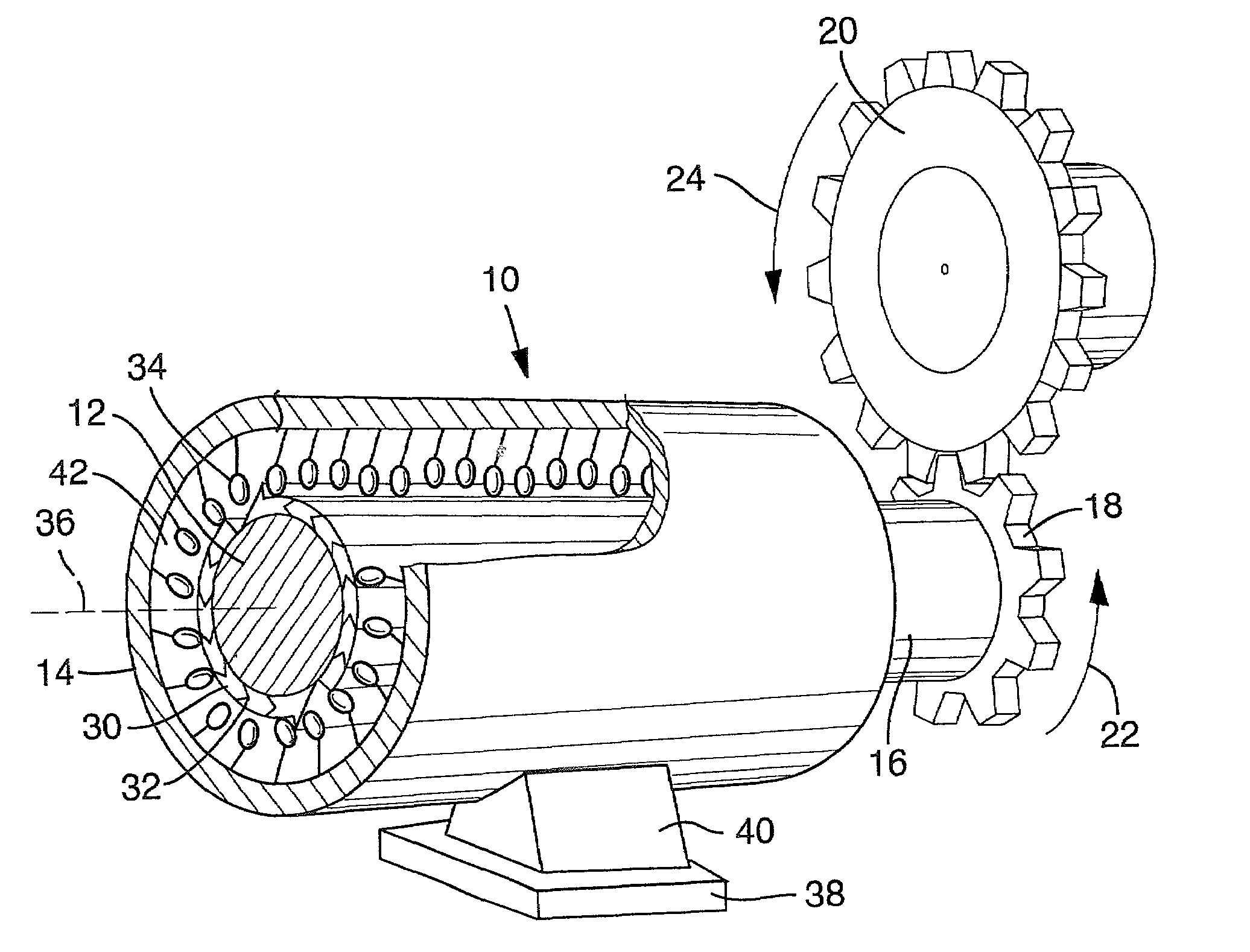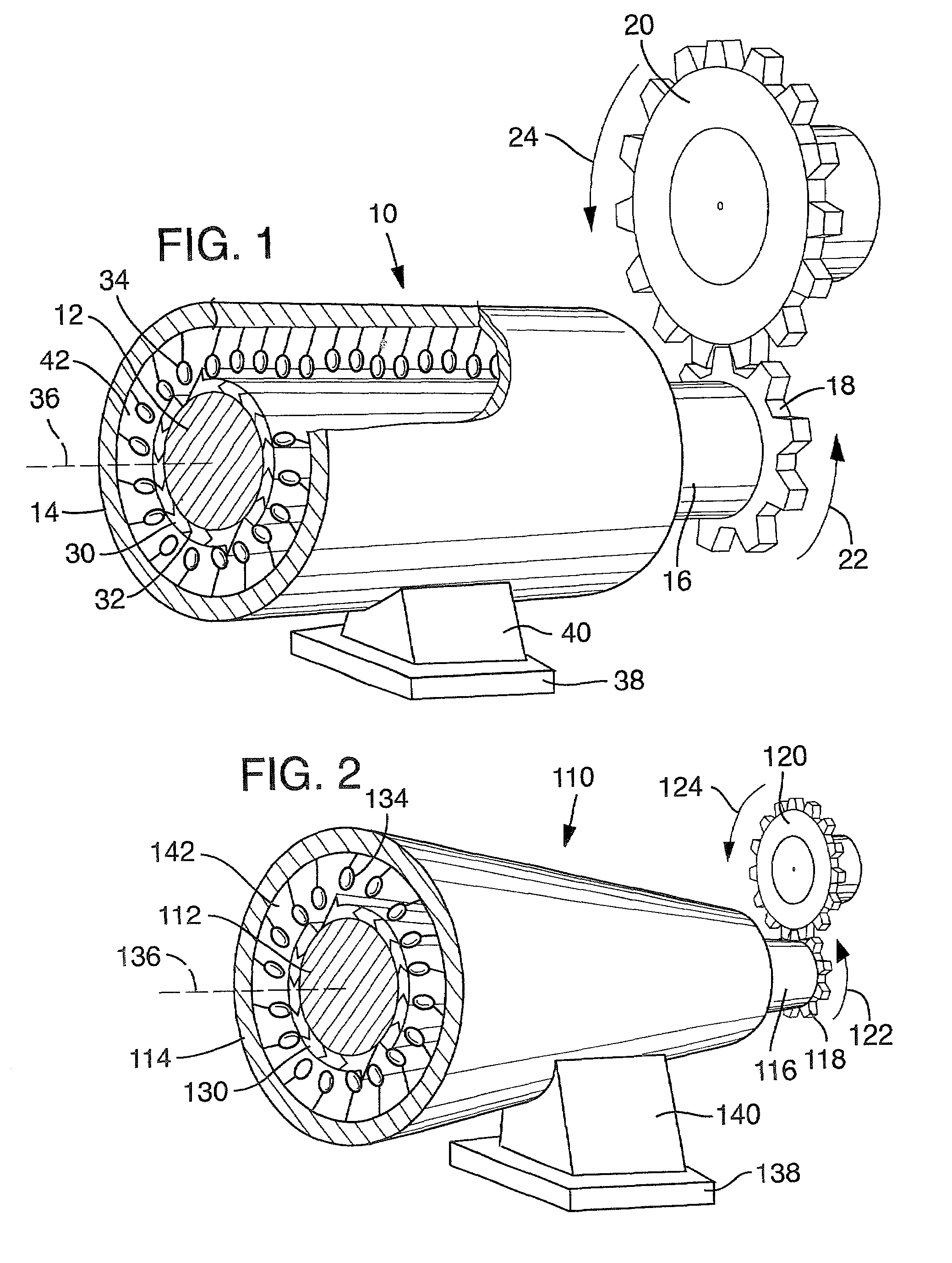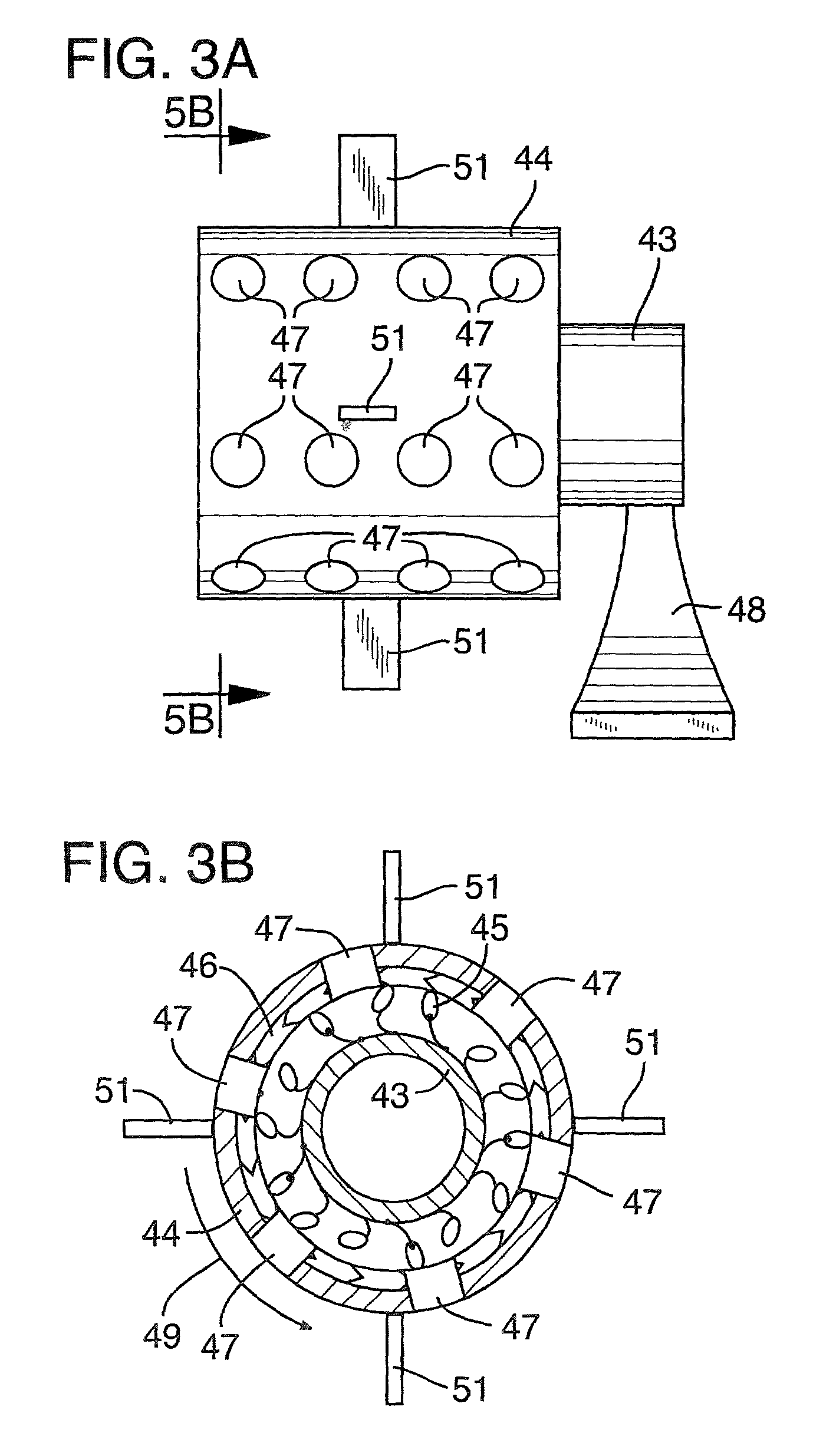Molecular motor
a technology of molecular motors and motors, which is applied in the field of molecular motors, can solve the problems of difficult microlithographic positioning of actin and myosin molecules, unfeasible, and crushed myosin tracks in such devices
- Summary
- Abstract
- Description
- Claims
- Application Information
AI Technical Summary
Benefits of technology
Problems solved by technology
Method used
Image
Examples
example 1
[0080]A particular embodiment of the molecular motor 10 is illustrated in FIG. 1, in which the motor is shown to include a solid inner cylinder 12 and a hollow outer cylinder 14 that is of slightly larger diameter than inner cylinder 12. An extension 16 of inner cylinder 12 projects from motor 10, and carries a driver in the form of a toothed gear 18. The teeth on gear 18 mesh with the teeth of a larger gear 20, so that rotation of gear 18 in the direction of arrow 22 will rotate gear 20 in the direction of arrow 24.
[0081]Although the dimensions of motor 10 are not critical, the inner cylinder 12 may have a diameter of 20 microns to 1 meter, for example 1 cm, while the outer cylinder 14 may have a diameter of 40 microns to 1 meter, for example 1 cm. A clearance distance between an outer surface of cylinder 12 and an inner surface of cylinder 14 is, for example, in the range of 20 to 30 microns.
[0082]Referring again to FIG. 1, a layer of actin 30 is directionally applied to the outer...
example 2
Movement of Substrates by Conformational Change of Myosin Heads
[0094]The molecular mechanism by which conformational changes of the myosin heads move an actin coated substrate are illustrated in FIGS. 4 and 5, which depict a conventional version of the mechanism of muscle contraction. Although this version is illustrated for purposes of explanation and illustration, the disclosure is not limited to this theory, and covers any actual mechanism of muscle contraction eventually discovered.
[0095]FIG. 4 shows a flat substrate 200 coated with a directionally oriented layer of actin 202. In FIG. 4A, the myosin head 204 is shown at the end of a power stroke which has moved substrate 200. In step 1 between FIG. 4A and FIG. 4B, ATP binds to the myosin head 204, which causes release of the myosin head 204 from the actin 202. ATP is then rapidly hydrolyzed, leaving ADP and inorganic phosphate (Pi) bound to the myosin 204, and resulting in a conformational change (FIG. 4C) in the shape of the my...
example 3
Multiple Concentric Cylinders to Increase Speed of Motor
[0098]Another embodiment of the motor is shown in FIG. 6, in which multiple concentric cylinders are used to construct a motor that can rotate at a higher speed than a motor having only an inner and an outer cylinder. In the embodiment of FIG. 6, the motor includes a solid inner cylinder 270, an intermediate cylinder 272, and an outer cylinder 274. Although three cylinders are shown in this example, a motor containing many more cylinders (for example 5, 10, 25, 50 or even more concentric cylinders) can similarly be used.
[0099]The construction of the motor in FIG. 6 is analogous to that shown in FIGS. 1-3, in that opposing surfaces of the cylinders are coated with complementary pairs of motor proteins, such as actin and myosin. Hence inner cylinder 270 has a layer of actin 276a directionally coated on its external surface, while intermediate cylinder 272 has a coating of myosin 278a on its inner surface. Intermediate cylinder 27...
PUM
| Property | Measurement | Unit |
|---|---|---|
| molecular weight | aaaaa | aaaaa |
| molecular weight | aaaaa | aaaaa |
| diameter | aaaaa | aaaaa |
Abstract
Description
Claims
Application Information
 Login to View More
Login to View More - R&D
- Intellectual Property
- Life Sciences
- Materials
- Tech Scout
- Unparalleled Data Quality
- Higher Quality Content
- 60% Fewer Hallucinations
Browse by: Latest US Patents, China's latest patents, Technical Efficacy Thesaurus, Application Domain, Technology Topic, Popular Technical Reports.
© 2025 PatSnap. All rights reserved.Legal|Privacy policy|Modern Slavery Act Transparency Statement|Sitemap|About US| Contact US: help@patsnap.com



